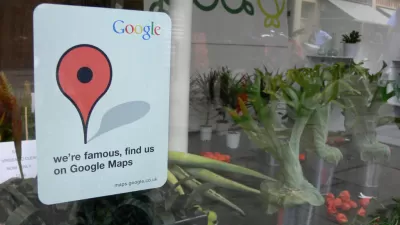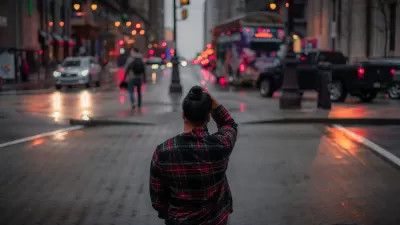By analyzing four public spaces using William H. Whyte's groundbreaking techniques for studying street life, a team of researchers led by Keith Hampton reached some surprising conclusions about how technology is changing our social interactions.

Influential books like “Bowling Alone,” by Robert D. Putnam, and “Alone Together,” by Sherry Turkle have explored the atomizing effect that modern technology is having on our relationships and communal structures. But unlike those who've produced "vague theories" about how digital technology is changing our lives, sociologist Keith Hampton sought to use hard data to answer questions like: "Are we really all just walking around tapping and tweeting and texting and ignoring our fellow human beings? Was there a pre-smartphone Eden?"
What did they find? "According to Hampton, our tendency to interact with others in public has, if anything, improved since the ‘70s," writes Mark Oppenheimer. As confounding as that conclusion is, the team's most surprising finding was that: "Today there are just a lot more women in public, proportional to men."
"Across the board, Hampton found that the story of public spaces in the last 30 years has not been aloneness, or digital distraction, but gender equity," concludes Oppenheimer.
FULL STORY: Technology Is Not Driving Us Apart After All

Study: Maui’s Plan to Convert Vacation Rentals to Long-Term Housing Could Cause Nearly $1 Billion Economic Loss
The plan would reduce visitor accommodation by 25,% resulting in 1,900 jobs lost.

North Texas Transit Leaders Tout Benefits of TOD for Growing Region
At a summit focused on transit-oriented development, policymakers discussed how North Texas’ expanded light rail system can serve as a tool for economic growth.

Why Should We Subsidize Public Transportation?
Many public transit agencies face financial stress due to rising costs, declining fare revenue, and declining subsidies. Transit advocates must provide a strong business case for increasing public transit funding.

How to Make US Trains Faster
Changes to boarding platforms and a switch to electric trains could improve U.S. passenger rail service without the added cost of high-speed rail.

Columbia’s Revitalized ‘Loop’ Is a Hub for Local Entrepreneurs
A focus on small businesses is helping a commercial corridor in Columbia, Missouri thrive.

Invasive Insect Threatens Minnesota’s Ash Forests
The Emerald Ash Borer is a rapidly spreading invasive pest threatening Minnesota’s ash trees, and homeowners are encouraged to plant diverse replacement species, avoid moving ash firewood, and monitor for signs of infestation.
Urban Design for Planners 1: Software Tools
This six-course series explores essential urban design concepts using open source software and equips planners with the tools they need to participate fully in the urban design process.
Planning for Universal Design
Learn the tools for implementing Universal Design in planning regulations.
Ascent Environmental
Borough of Carlisle
Institute for Housing and Urban Development Studies (IHS)
City of Grandview
Harvard GSD Executive Education
Toledo-Lucas County Plan Commissions
Salt Lake City
NYU Wagner Graduate School of Public Service



























